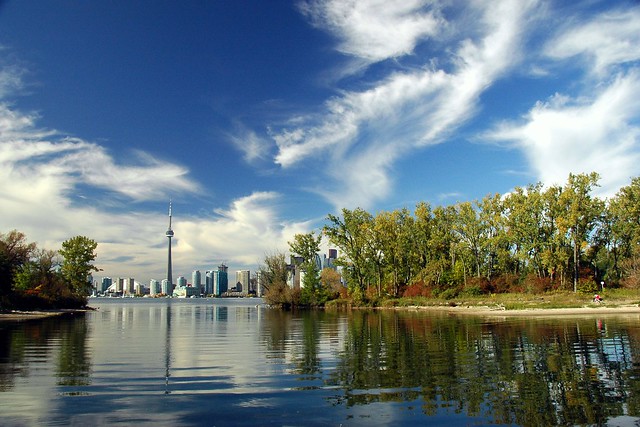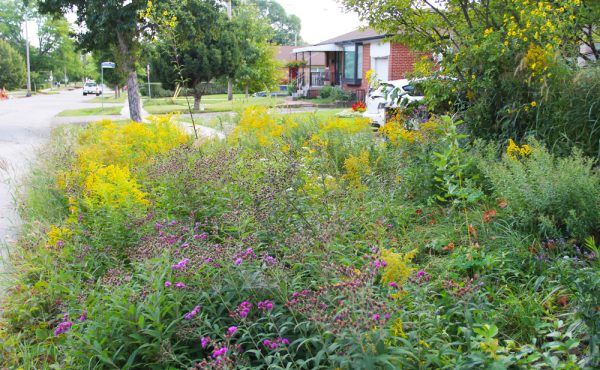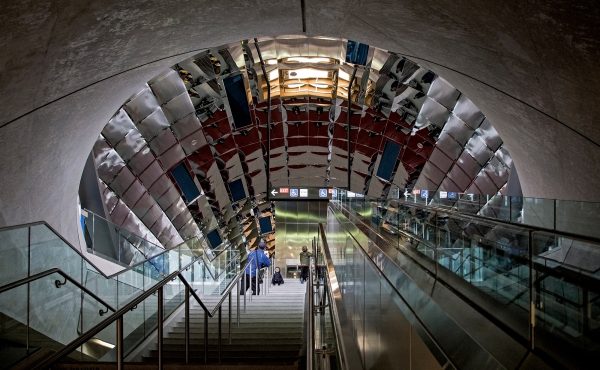Could you imagine a city without trees? Denuded streets baking under the hot sun in the summer and bleak(er) during the long winter months and eerily silent without birds with nowhere to perch. That is how a tree-less city would look and feel like. A local organization, Local Enhancement & Appreciation of Forests (LEAF), is working with communities across Toronto to support the urban forest to prevent that kind of dark vision. I had to the opportunity to chat with Janet McKay, the Executive Director of LEAF, about the urban forest in Toronto.
Trees offer so much to an urban space. As Janet explained, trees give us the ability to exist in dense urban spaces. Our physical well-being is so closely linked with our leafy friends. Improved air quality and protection from the sun are just some of the benefits of the urban canopy. For example, with adequate tree cover a home can reduce its use of air conditioning by 40%. Mental health is also linked with trees. Remember that tree-less street? A space that is uninviting doesn’t invite a sense of community. Biodiversity is also increased by a diverse urban forest supporting birds, bugs and other critters that make up our city’s ecosystem.
Growing and maintaining a tree, particularly in an urban environment with stressors such as heat and pollution, is not easy. Knowing where to plant in order to get the optimum level of sunlight and water and considering proximity to structures is essential. One should also consider the species of tree and if it will fit in with future plans. For example, would you want a very large tree if you also want to have a vegetable garden in the same area? A tree that matches the homeowners’ lifestyle and ideas of what they envision their property to be is less likely to be removed.
If you are not an arborist it can be fairly daunting to plant and maintain a tree that will last a lifetime. LEAF recognised that there was an opportunity to establish large native trees on private property. The organization started with a seedling pick-up program but what Janet noticed in that far too many seedlings were never planted or planted in less than optimum places. People needed support and guidance to grow strong trees. Site consultants now work with home owners to determine soil type, light, species, whether the tree suits the owner, soil compaction, the presence of utilities like gas lines, and whether the neighbours were consulted.
Toronto currently has 17% canopy cover and the City of Toronto wants to double this figure by 2050. Janet argues this is fairly ambitious. Planting trees is important but the maintenance of trees is crucial and that is what is often neglected. This results in trees dying out before they can reach maturity. To make matters worse the Emerald Ash Borer, which slowly kills Ash trees, is making its way around Toronto. It has already decimated Ash trees in other cities including Windsor, which has lost all its Ash trees. Diversifying tree species in Toronto is one way to keep the population healthy. Currently, one third of our 116 species are Maples. That leaves the population potentially at risk should a Maple-specific virus or predator hit Toronto.
What is positive is that there is a growing interest in trees more than ever, not just from the community but also from the province and cities. For example, Peterborough has an Urban Forest Management Plan. Here in Toronto there are many good things happening however Mayor Ford’s desire to bring “fun” back to the city by reducing the red tape could make it easier for tree to be cut down, which could spell trouble for doubling our urban canopy.
Janet discussed the concept of forest stewardship and how we are all stewards of our urban forest. This sense of responsibly is important because though a tree may be on private property it is also a public good in the sense that the benefits it provides are for the entire community. It is in our interest for our neighbours to keep their trees strong and healthy as much as it is in their interest for us to do the same. You can help by taking five minutes to water trees in front of your home on the street, that are often under-watered and overheated. LEAF offers training where you can learn more about trees and how to help them. You can be an advocate for trees by letting your councillor know that a city aiming to be “green” should literally be green – not just metaphorically – and urge them to support our urban forest.
Planting a tree is a gift to the next generation and supporting a tree is a gift to yourself and your community. So pull out a spade, a watering can and have a conversation with the folks at LEAF to plant the seeds to a brighter and healthier future for Toronto.
For more reading on Toronto’s urban trees check out Every Tree Counts.
Photo by Shreyans Bhansali





One comment
I can easily imagine a city without trees, denuded streets baking under the hot sun in the summer and bleak(er) during the long winter months. It’s called Toronto. The commercial arteries have pathetic tree plantings compared to peer cities in North America and the appearance is miserable as a result. If not for the residential neighbourhoods and ravines Toronto would probably have no trees at all.
Some tree canopy figures:
# Burlington, Vt. — 43 percent
# Washington, D.C. — 35 percent
# Minneapolis — 31 percent
# Boston — 29 percent
# Des Moines, Iowa — 27 percent
# Baltimore — 27 percent
# New York — 24 percent
# Providence, R.I. — 23 percent
# Chicago — 17 percent
You read that right — Toronto is way behind supposedly gritty Washington DC and New York and Baltimore, never mind leafy Boston and Minneapolis.
Toronto needs an initiative like Million Trees NYC — that’s the only way to get action. (http://www.milliontreesnyc.org/html/home/home.shtml) Unfunded wishful thinking will get you nowhere.